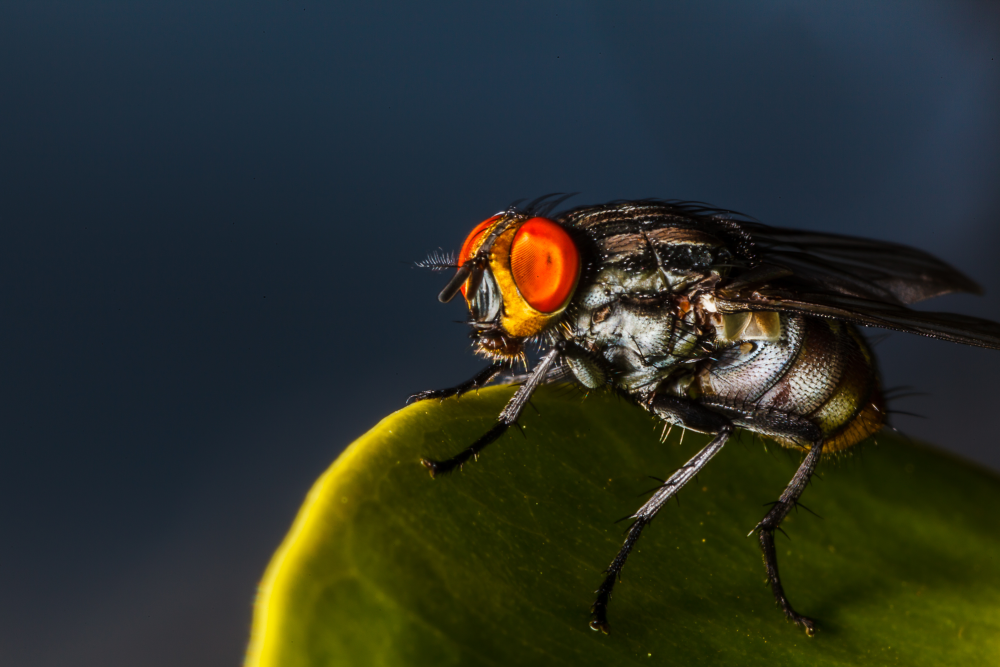You scratch your hand and notice some faint irritation. There’s a small red bump on your skin, curiously close to where you swatted a mosquito just a few days ago. You prod it, and it moves. Congratulations, new parent, you’re officially with botfly!
Known to science as Dermatobia hominis, the human botfly can be found across Central and South America. A reasonably common parasite, botfly larvae have evolved to develop in human tissue. The adult fly is about the same size as a housefly, but avoiding them won’t keep you safe from their invading babies.
Botfly larvae
When a male and female botfly love each other very much, they’ll mate so that the female’s eggs are fertilized. Now, she has to find an unwitting babysitter to ferry her eggs to a human host, most often a blood-sucking insect like a mosquito or tick. In what must be a very confusing exchange for a mosquito, she will capture one and attach her eggs to its abdomen before letting it go. The mosquito flies off, and the female (presumably) dusts her tiny little hands together. Her job as a parent is done.
This reproductive strategy is what’s known as phoresy, and it hinges on an insect intermediate. When the mosquito lands on a human host, the warmth of their skin will trigger the eggs to hatch, releasing larvae that burrow in either via the puncture made by the mosquito, or through something like a hair follicle.
Mosquitos, eh? Even when they don’t mean to be, they continue to be the worst.

The adult human botfly is technically harmless, but make no mistake – it has malice in its heart.
Image credit: MarcusVDT / Shutterstock.com
Botfly life cycle
This parasitization, while a bum deal for us humans, is a vital step in the botfly life cycle. The larvae will hang out in the skin getting fat on human tissues as they feed for around six weeks, safe inside their fleshy creche. If you want to know what that looks like (and we all know you secretly do), this entomologist grew botfly larvae in his arm and filmed it, so you’re in luck.
Once the botfly larva is ready to go out into the world, it creates a hole and wriggles out of its host, plopping onto the ground so that it can finish off in the soil and emerge once more in its adult fly form.
Botfly removal
Disgusting? Yes, but we’ve had plenty of time to get used to the unfortunate life cycle of human botflies. In their native range, parasitization from a human botfly isn’t all that uncommon, and the symptoms are easily recognizable.
The developing botfly forms what’s known as a warble that looks not unlike a pimple, only it will usually have a little hole in the middle. That’s where the larvae has stuck up its breathing tube like a snorkel so it can still get air.
Doctors prefer to remove the larvae themselves rather than letting nature take its course because botfly removal is the safer option. In cases where a larva has burrowed deep, minor surgery may be required, and removal can be made easier by applying something like Vaseline to the lump, effectively forcing the larva to come up for air as its breathing tube is blocked.
A critter that gets your neck up for sure, but you’ve got to admire the ingenious approach to parenting. The fly itself poses no threat to humans, as it’s only the poor mosquitoes that get roped into being delivery drivers that carry the eggs to our skin. Certainly a less energetically expensive option than waiting for your offspring to move out of your basement 40 years after giving birth to them.
Source Link: Human Botfly: Say Hello To The Parasite That Would Love To Get Under Your Skin